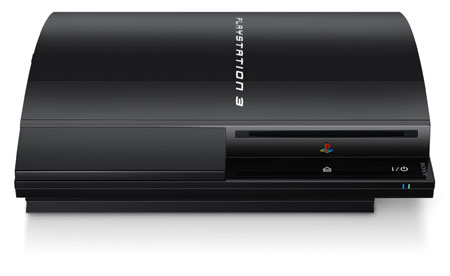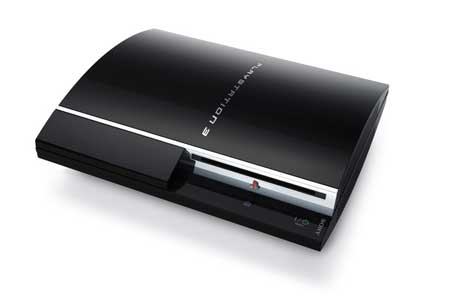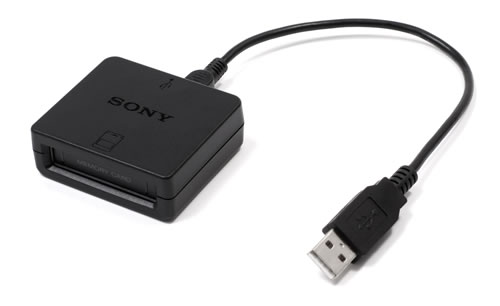17 June 2012
Clearly, the PS3 is not retro. Ask the same about its predecessor, though, and the answer is murkier. The PS2 was launched in Japan in March 2000—twelve years ago! Although the PS2 may not leap to the top of your list for retro consoles, there's at least the potential for an argument on that account, especially if you grew up with the PS2 as your first console.
If Wikipedia is to be believed, the PS2 library consists of 2,016 unique titles. More importantly, many of them are superb. PS3 backwards compatibility with the PS2, unfortunately, has declined with each new hardware revision, from excellent, to good, to non-existent. It's difficult to Google your way to a clear understanding of what PS3 version is best for playing PS2 games, but that's why you have retro fanatics like the people running this site. Hopefully, by the end of this feature you'll recognize your most PS2-friendly options, whether you're rocking it in North America, where PAL television is the standard, or even in the Land of the Rising Sun.
Good News on PS1 Compatibility
Before delving into the PS2 issues, let's clear the air on the more retro PS1 and its compatibility with the PS3. First off, all PS3s are compatible with PS1 titles. No need to worry about acquiring a particular PS3 hardware version. If you want to dig into the particulars, check out this study on Curmudgeon gamer. Basically, 126 out of 128 tested PS1 games worked with minor issues.
NTSC (U.S. and Japan)
Let the size of the PS3's storage lead the way—smaller is better. We're talking 20 or 60 GB. (Don't worry about the lack of space, because Sony designed the PS3 so that owners can perform their own hard disk upgrades). No other PS3 variation is like these two, because they include full hardware-based PS2 backward compatibility, thanks to the Emotion Engine CPU. The full compatibility rate for these two models is somewhere in the vicinity of 98%. There are, however, still a few problem games, and if you have doubts you should check this list at tech-faq.com. |
20 GB PS3 (model# CECHBxx) |
60 GB PS3 (model# CECHAxx) |
 |
 |
|
|
| |
|
Don't be tempted by the 80 GB version (model# CECHExx), which drops the Emotion Engine and has to fall back on software-based PS2 emulation. While a large number of PS2 titles may technically "work," numerous suffer from annoying gameplay issues. To examine the difference between the 20/60 GB and 80 GB versions, you can consult Sony's compatibility search engine, but you'll quickly realize it's among the crappier databases on the Intertubes. In terms of merely checking compatibility for the 20/60 GB model, your best bet is Wikipedia's list, where you'll also gain a sense of how people in the PAL region are worse off, providing a nice transition to... |
PAL Region (Europe, Australia, and New Zealand)
This is going to be a sad story. In PAL regions, Sony never produced a PS3 that included the Emotion Engine. Your PS3 backwards compatibility range from bad to non-existent. Cutting to the chase, you should really play your PS2 titles in a real PS2. Hold onto your "old" PS2 or pick one up on the cheap. It will save you tons of compatibility headaches.
However, if you're determined to maximize the ability of your PS3 to cater to its predecessors, you should track down the 60 GB version, which at contains the PS2 graphics synthesiser, along with limited software-based compatibility As you can imagine, "limited" and "software-based" are far from ideal. According to Curmudgeon Gamer, your compatibility (seen in the NTSC 20 and 60 GB versions) will drop from 93% to 57%. The aforementioned Wikipedia list also shows how you're significantly worse off than those in NTSC-land with the 20 or 60 GB PS3 models.
In short, DON'T SELL YOUR PS2. It remains one of the greatest consoles ever created, and it's unlikely that it will be unseated from a Top 5 console list in the near future. |
Your Original PS2! |
60 GB PS3 (model # CECHCxx) |
|
|
|
|
| |
|
Other Reasons to Love Early PS3 Models
Along with great backwards compatibility for PS2 games, there are some other nice bonuses that come along with the PS3 models recommended above.
1) You get four USB ports, whereas the newer PS3s only include two.
2) Your hardware supports Linux, a feature that was dropped starting with the slim PS3 models.
3) Most importantly of all, you have SACD playback! That's right whereas the normal CD holds about 700 MB of audio, you can use this obscure format and medium (a CD???) to contain 7.95 GB of audio! Awwwww, yeahhhhh! |
Transferring Saved Games to PS3
Dealing with all of those little PS1 and PS2 memory cards can get a little bit annoying. The great news is that you can easily transfer those old saves to your PS3. Of course, you need to purchase a special peripheral. It's really just a USB adapter that allows your old memory card to connect to connect to this new fandangled hardware. Sony makes a name-brand version, and then you'll find numerous knockoffs on the Internet. As long as it works or the seller offers easy refunds, who cards what solution you choose. From personal experience, here's Vinny's score:
Sony Real-deal, Name Brand Adapter - 1
Random, knock-off, Chinese Adapter - 0
That's only two data points of course, and since the Chinese seller provided a refund, no big deal. Just something for y'all to keep in mind. |
 |
|
|
|
| |
|
Conclusion
In many ways, your ideal PS3 boils down to how much space and how many power outlets you have available. Vinny has eight consoles (as well as an original NES and Atari 2600 ready to plug in at a moment's notice) and a PC currently hooked up to his TV, so having the PS3 cover the space/electrical requirements of a PS2 is pretty helpful to keep the stack of consoles and rats nest of cords somewhat manageable—a slightly smaller target of his fiancé's wrath.
Then you can look at it from the message to Sony perspective. Ultimately, your choice on what you purchase sends a message to companies. If you think Sony blew it by dropping PS2 compatibility, then don't give them the satisfaction of a sale of a recent PS3, and instead find someone looking for a home for their old-school current-gen PS3 that contains the extra capabilities.
Or maybe you're on a budget? A used 20/60 GB PS3 still costs much less than a brand new one. Not to mention that you can more easily play tons of bargain PS2 titles!
Perhaps best of all, it's just cool to have an older-school PS3. Know and love the hardware you buy. Only the 60 and 80 GB PS3s with some level of PS2 backwards compatability have chrome trim. That's right, chrome! Like that giant SUV parked next door with those insane chrome rims!
Whatever you desire of your PS3, hopefully this feature helps you find the right model, and—most importantly—keep looking backwards as well as forwards as you discover new video games. |
|
|